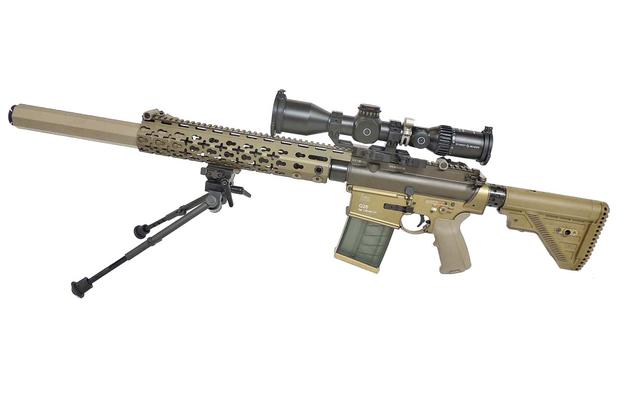A senior Army modernization official today said that the service's new Squad Designated Marksman Rifle will be the 7.62mm Heckler & Koch G28.
The Army selected the G28 as its new Compact Semi-Automatic Sniper System in 2016 to replace its M110 Semi-automatic Sniper System -- a move that will provide snipers with a shorter rifle that doesn't stick out to the enemy as a sniper weapon.
Now the Army plans to start fielding the G28 in 2018 to infantry squads as the service's standard SDMR, Lt. Gen. John Murray, deputy chief of staff for Army G8, told Military.com.
The Army has money in the fiscal 2018 budget earmarked for the SDMR program, said Murray, who did not have the exact figure listed in the budget.
Equipping squads with a new 7.62mm SDMR is the first step in a two-phase effort to ensure units have the capability to penetrate enemy body armor.
Last May, Gen. Mark Milley testified to the Senate Armed Services Committee that the service's current M855A1 Enhanced Performance Round will not defeat enemy body armor plates similar to the U.S. military-issue rifle plates such as the Enhanced Small Arms Protective Insert, or ESAPI.
The revelation launched an ad hoc effort to acquire new 7.62mm Interim Service Combat Rifle, mainly for infantry units, but the idea quickly lost momentum.
Then in early February, Murray told members of Congress that the new SDMR is a phase one; phase two would be to field a more powerful replacement to the M249 squad automatic weapon, which is chambered for 5.56mm.
The presence of a 7.62mm rifle in the squad formation is nothing new, but units currently have to turn in their SDMRs at the end of a combat deployment.
Since 2009, the Army's SBR has been the Enhanced Battle Rifle 14, a modernized M14 equipped with a Sage International adjustable aluminum stock with pistol grip, a Leupold 3.5x10 power scope and Harris bipod legs.
The Army adopted the EBR concept, first used in 2004 by Navy SEALs, in response to the growing need of infantry squads operating in Afghanistan to engage enemy fighters at longer ranges.
-- Matthew Cox can be reached at matthew.cox@military.com.










